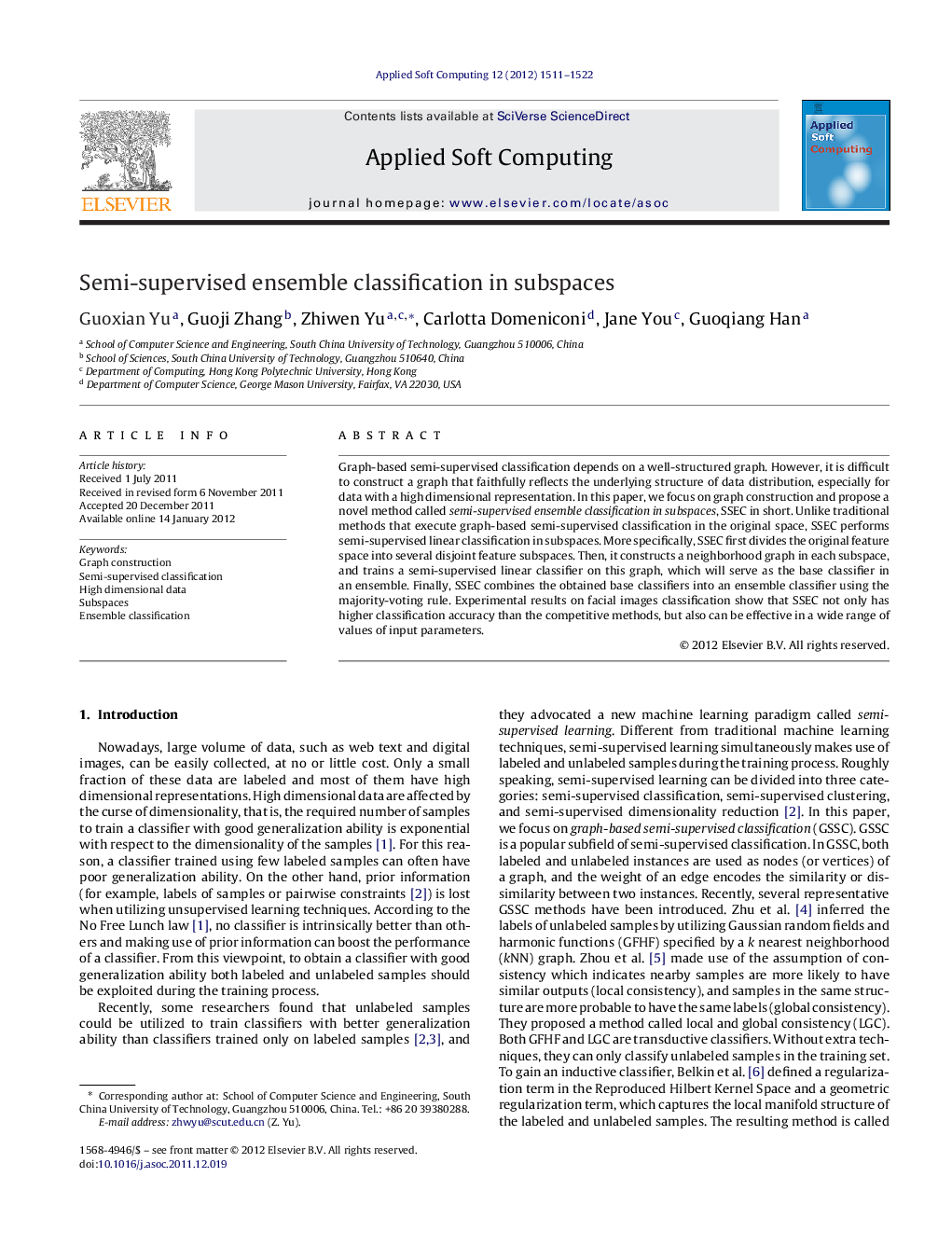| Article ID | Journal | Published Year | Pages | File Type |
|---|---|---|---|---|
| 496540 | Applied Soft Computing | 2012 | 12 Pages |
Graph-based semi-supervised classification depends on a well-structured graph. However, it is difficult to construct a graph that faithfully reflects the underlying structure of data distribution, especially for data with a high dimensional representation. In this paper, we focus on graph construction and propose a novel method called semi-supervised ensemble classification in subspaces, SSEC in short. Unlike traditional methods that execute graph-based semi-supervised classification in the original space, SSEC performs semi-supervised linear classification in subspaces. More specifically, SSEC first divides the original feature space into several disjoint feature subspaces. Then, it constructs a neighborhood graph in each subspace, and trains a semi-supervised linear classifier on this graph, which will serve as the base classifier in an ensemble. Finally, SSEC combines the obtained base classifiers into an ensemble classifier using the majority-voting rule. Experimental results on facial images classification show that SSEC not only has higher classification accuracy than the competitive methods, but also can be effective in a wide range of values of input parameters.
Graphical abstractFigure optionsDownload full-size imageDownload as PowerPoint slideHighlights► Subspaces are randomly divided instead of randomly generated. ► Base classifiers are trained in the subspaces instead of the original space, and can be efficiently trained with less time complexity. ► Base classifiers are diverse and accurate. ► The fused classifier is accurate and robust to a wide range of input values, and avoids missing important features. ► The performance of ensemble classifiers on high dimensional data can be boosted by this technique.
